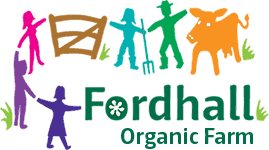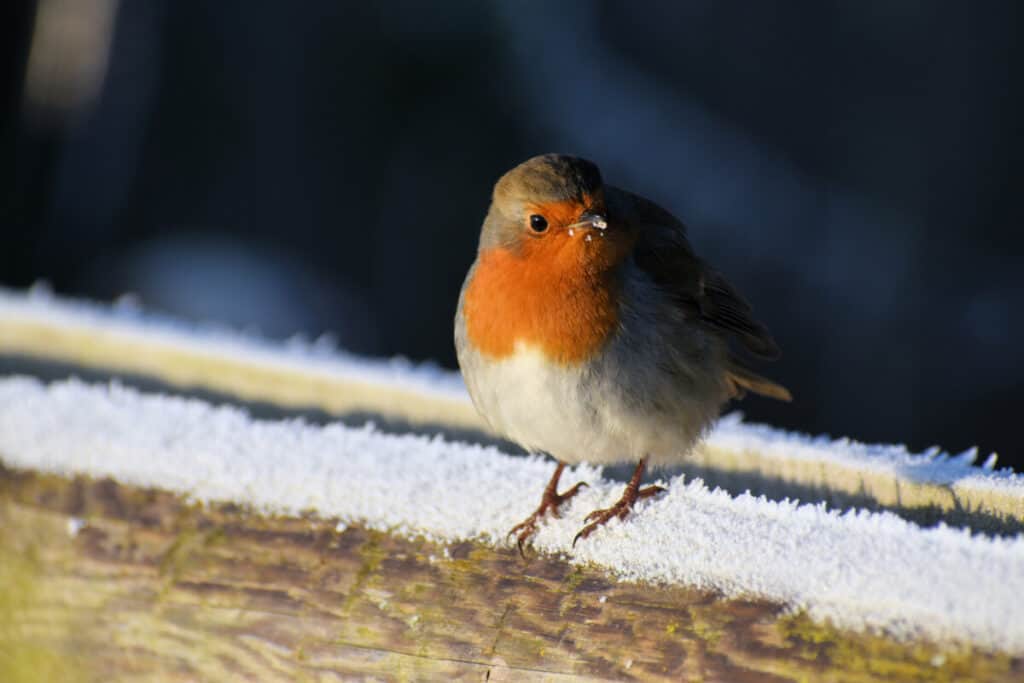There are definite tell-tale signs winter is on its way to the farm – an early morning frost over the grass, and mist illuminated by the autumnal sunrises hanging over the fields. The livestock, however, seem to remain undeterred by the dipping temperatures, accustomed to spending all year outside as a part of the foggage system carried out at Fordhall – they basically graze our meadows year round!
Aside from cows, sheep and piglet litters, Fordhall is also committed to working with nature, not against it – supporting wildlife through winter means we still see species such as squirrels, blue tits, blackbirds, goldfinches, robins, long tailed tits and more.
Winter can be a challenging time for the wildlife we’re used to seeing in our gardens and local green spaces – lower temperatures and lack of food make many mammals, amphibians, reptiles and invertebrates seek out shelter to sleep the chilly months away. You will see some species bobbing about however – birds and squirrels don’t hibernate but still need support to see the winter through.
Fortunately, there are several easy ways you can help garden wildlife at the end of the year – both the sleepy and active individuals.
Helping hibernators:
To say amphibians hibernate isn’t wholly accurate – they actually enter a state of torpor, where they are still able to wake up on warmer winter days and seek out food. They, just like invertebrates and hedgehogs, like a cosy leaf and log piles to settle down in – it is best to rake fallen leaves into a quiet corner and leave them until spring, so the wild critters can hunker down. If it is necessary to disturb the pile, ensure you check for our prickly hedgerow friends before you do so – hedgehog houses are readily available at most garden centres as an alternative the leaf mountain. Frogs can also be quite partial to a compost heap, so avoiding turning it during this time will minimise the disruption to them. A couple of years ago, a group of our wonderful volunteers built a hibernaculum to support frogs and newts on site.
As with the larger creatures, one of the main things invertebrates are looking for is shelter. Setting up a bug hotel is something most of us can easily do – they can be attached to a shed, placed on a balcony, mounted on a wall…if there is a spare corner, a bug hotel will most likely sit there. These too are easy to acquire from garden centres, but can be a great deal of fun to make yourself! Natural materials, such as sticks, leaves and pinecones, inside a sheltered box will function as a cosy bolthole for many minibeasts.
Helping active wildlife:
Hedges, ivy and seedheads are a valuable source of food for feathered friends, so leaving this undisturbed will be greatly appreciated by any bird visitors. In the colder weather, they are looking for calorie rich food to enable them to stay warm, so popping out suet, sunflower hearts and peanuts from them will help to supplement their diet. On the farm, there are bird feeders both outside of the café and in the woodland.
Despite the garden birds not nesting until spring, winter is an ideal time to pop some up. When cold snaps arrive, the little winged friends will use them as a shelter, and often return to them in spring to raise chicks. Do just be aware that different birds have a preference for different boxes – those with a hole entrance will attract sparrows and blue tits, whereas open fronted boxes are more likely to be inhabited by wrens and robins.
If you come to the farm for a wintery visit, do be sure to keep an eye out for our huge bug hotel by the pig pens, or the bird boxes in the woodland. We like to do our best to support wildlife on site all year round! You can help us keep track of this wildlife too, by logging any sightings at www.fordhallfarm.com/naturespotting/
Francesca Lant, Marketing and Communications Officer

